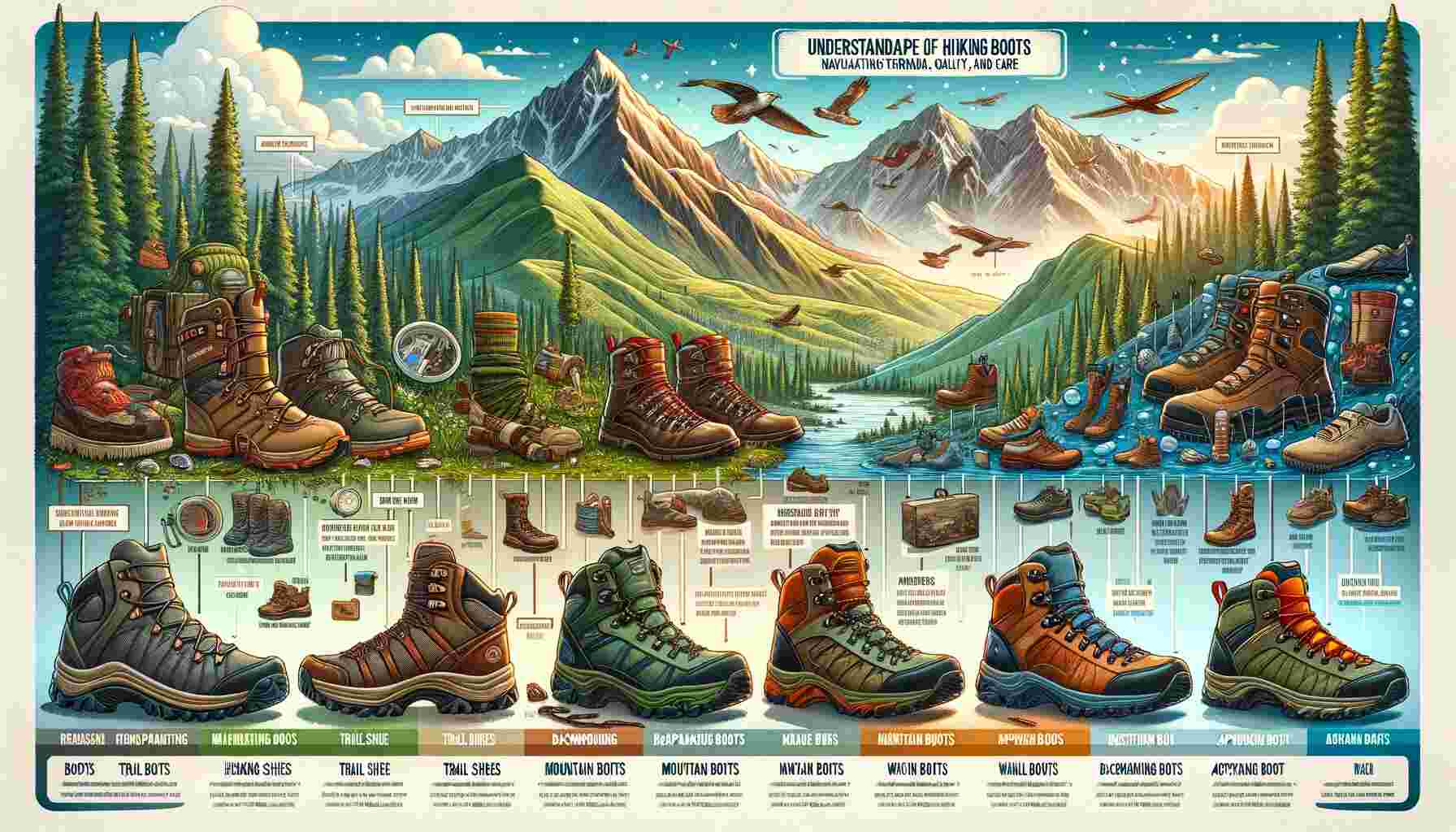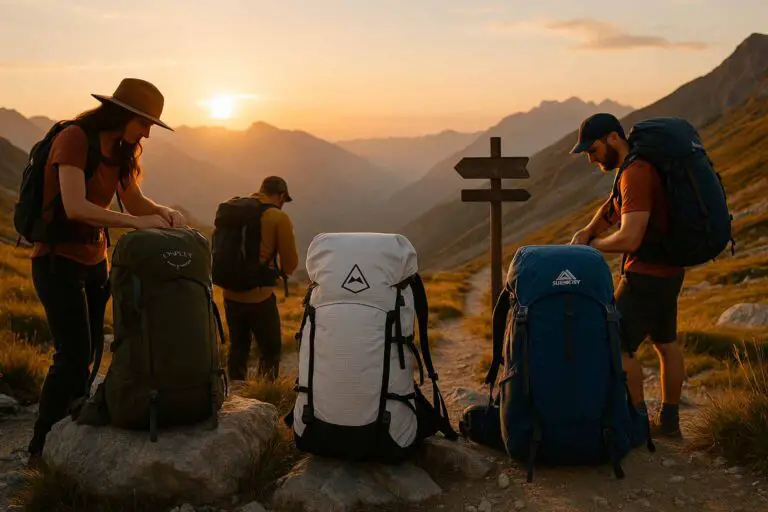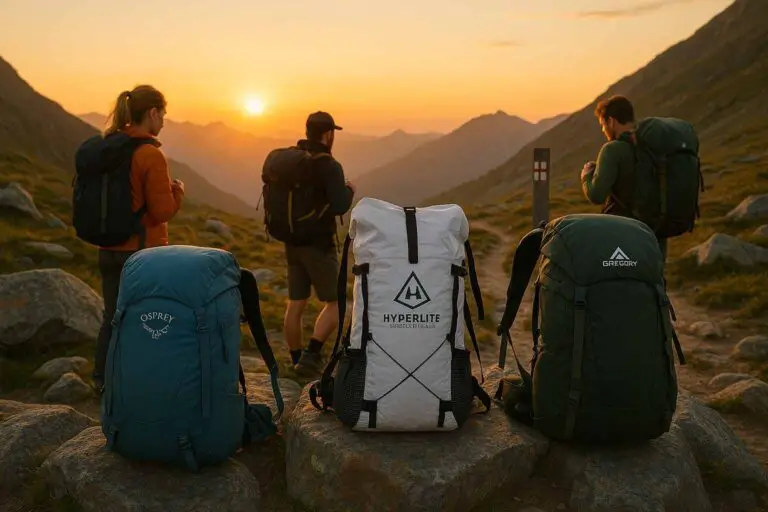Hiking boots are an indispensable asset for outdoor enthusiasts, providing much-needed comfort, support, and protection during adventures in the great outdoors. Whether you’re a casual day hiker or a seasoned backpacker, investing in a high-quality pair of hiking boots is a wise decision. However, one pressing question that often perplexes hikers is, “How long do hiking boots truly last?”
The lifespan of hiking boots is a complex puzzle, with numerous variables coming into play. It’s like navigating a rugged trail, where the path ahead is shaped by the terrain, the quality of your gear, and how you maintain it. Let’s delve deeper into understanding these factors and demystify the code of hiking boot longevity.
Mileage and Timeframe
The lifespan of hiking boots varies significantly based on several factors, including the quality of the boots, the terrain they are used on, and how they are cared for. Here’s a breakdown of the expected mileage and timeframe for different types of hiking boots:
- Trail Shoes: These lightweight options may last around 300-500 miles or roughly 1 to 2 years with moderate use.
- Trail Hikers: A step up in durability, these boots can endure approximately 500-750 miles, translating to 1.5 to 3 years of regular use.
- Mountain Boots: Designed for challenging terrains, these boots may last between 750-1,200 miles or about 2 to 4 years.
- Backpacking Boots: Built for heavy loads and extended trips, these boots can persist for 1,000-1,500 miles or approximately 3 to 5 years.
- Approach Shoes: These specialized boots for climbing approaches are durable for around 400-700 miles or about 1 to 2 years.
These estimations are subject to variations based on factors like terrain, frequency of use, and boot care routines.
For instance, winter hiking boots tailored for cold and snowy conditions can have a longer lifespan, ranging from 800-1,200 miles or 2-4 years with regular use. Vegan hiking boots, constructed from synthetic materials, typically last between 500-1,000 miles or 1-3 years when used regularly.
Build Quality
The quality of materials and construction methods significantly influence how long your hiking boots will last. Boots crafted from top-notch materials and constructed using advanced methods tend to endure for a longer duration. Here are some key points to consider:
- Materials: Full-grain leather, renowned for its durability and resistance to abrasion and moisture, is a favored choice among hikers. Synthetic materials are generally less durable but offer breathability and reduced weight.
- Midsoles: The midsole provides crucial cushioning and support. Polyurethane (PU) midsoles are known for their durability, while EVA (ethylene-vinyl acetate) midsoles offer lightweight cushioning.
- Outsoles: The outsole, the part of the boot that contacts the ground, plays a pivotal role in traction and durability. Vibram and Continental rubber outsoles are trusted options for their grip and longevity.
- Waterproofing: Waterproof hiking boots equipped with technologies like Gore-Tex membranes can prolong the life of your boots, provided they are properly maintained.
- Construction: Boots crafted with methods like welted construction, where the upper material is stitched to a strip and then attached to the outsole, tend to exhibit superior durability.
Usage and Terrain
The type of terrain and the frequency of use significantly impact the lifespan of hiking boots. Think of your boots as companions on your journey, and the terrain as the ever-changing path. Here’s how these factors come into play:
- Terrain: Hiking on rough, rocky terrains or abrasive surfaces accelerates wear and tear, particularly affecting the outsoles and upper materials.
- Frequency of Use: Frequent and rigorous use naturally leads to more rapid deterioration. If you’re a regular hiker, consider rotating between multiple pairs of boots to extend their overall lifespan.
Care and Maintenance
Just as you need sustenance and rest on your adventures, your hiking boots need care and attention to thrive. Proper care and maintenance can significantly extend the lifespan of your boots. Here’s how to ensure your boots are ready for the next trail:
- Cleaning: Regularly clean your boots to remove dirt and debris. For synthetic materials, use a stiff brush or a warm, damp cloth. Leather boots benefit from specific leather cleaners and conditioners. Avoid harsh chemicals that can damage the materials.
- Drying: After each hike, allow your boots to dry naturally in a well-ventilated area. Avoid exposing them to direct heat sources like radiators or open flames, as excessive heat can damage the materials.
- Waterproofing: Reapply waterproofing treatments as needed, following the manufacturer’s recommendations. This helps maintain the boots’ water-resistant properties.
- Storage: Store your boots in a cool, dry place away from direct sunlight. To help them maintain their shape, use boot trees or stuff them with newspaper.
Signs of Wear and When to Replace
Knowing when it’s time to bid farewell to your hiking boots is essential for your comfort and safety on the trail. Keep an eye out for these signs of wear:
- Worn-Down Tread: If the tread on the outsole is significantly worn and has lost its original texture, it’s time to consider replacing your boots for improved traction.
- Reduced Comfort and Support: As the midsole breaks down, you may experience reduced cushioning and support, which can lead to discomfort and potential foot fatigue or injury.
- Visible Damage: Check the upper material for cracks, tears, or other signs of damage. If the upper has extensive damage that cannot be repaired, it’s a clear sign to invest in a new pair of boots.
- Water Leakage: If your waterproof hiking boots no longer keep your feet dry in wet conditions, it’s a sign that the waterproofing may have deteriorated.
- Inadequate Fit: If your feet have changed in size or shape, or if the boots no longer provide a comfortable and secure fit, it’s time to consider a new pair.
- Odor and Mold: Persistent odors and mold growth inside your boots can be signs of moisture buildup and inadequate breathability, which should be addressed promptly.
- Visible Structural Damage: Any significant structural damage, such as separation of the sole from the upper or a broken shank, indicates that your boots have reached the end of their useful life.
Remember that proactive maintenance, correct care routines, and regular inspections can help you detect these signs early, potentially increasing the longevity of your hiking boots.
Best Hiking Boots for Durability and Comfort
1. Salomon X Ultra 3 Mid GTX
Ideal for trail hikers, this boot offers a perfect balance of comfort and durability. Equipped with Gore-Tex waterproofing and a Contagrip sole, it’s suitable for varied terrains and weather conditions. Check price, color variation, and more here.
2. Merrell Moab 2 Mid Waterproof
A popular choice among day hikers, these boots are known for their comfort and reliability. They feature durable leather, supportive footbeds, and a Vibram sole for superior traction. Check price, color variation, and more here.
3. Scarpa Zodiac Plus GTX
For mountain adventurers, these boots provide excellent support and protection. They are robust, with Gore-Tex waterproofing and Vibram soles, designed for challenging terrains. Check price, color variation, and more here.
4. Lowa Renegade GTX Mid
A versatile option for backpackers, these boots are renowned for their comfort and durability. They offer a waterproof Gore-Tex lining and a Vibram Evo outsole, suitable for both short hikes and longer backpacking trips. Check price, color variation, and more here.
5. La Sportiva TX4 Mid GTX
These approach shoes are perfect for climbers who need a reliable transition from hiking to climbing. They offer great support, Vibram Mega-Grip soles, and STB Control System for enhanced stability. Check price, color variation, and more here.
Care and Maintenance Products
- Nikwax Fabric and Leather Proof Waterproofing: This product is excellent for maintaining the waterproof properties of your hiking boots. It’s easy to apply and helps keep your feet dry in wet conditions.
- Gear Aid Revivex Suede and Fabric Boot Care Kit: This kit includes everything you need for cleaning and waterproofing hiking boots made from suede and fabric.
- Sof Sole Mink Oil for Conditioning and Waterproofing Leather: Ideal for full-grain leather boots, this mink oil helps condition the leather and enhance its water resistance.
- Boot Bananas Moisture Absorbers: Keep your boots fresh and dry between hikes with these moisture absorbers, which help prevent mold and odors.
- Crep Protect Ultimate Rain & Stain Spray: This spray offers an extra layer of protection against rain and stains, suitable for synthetic materials.
Tips for Selecting Hiking Boots
- Fit and Comfort: Always try boots on before purchasing. Walk around to ensure they fit well and offer adequate support.
- Material: Consider the type of hiking you’ll be doing and choose materials that suit your needs (leather for durability, synthetic for breathability).
- Sole Grip: Look for soles with good traction, such as Vibram, especially if you plan to hike on rocky or slippery terrain.
- Waterproofing: If you hike in wet conditions, opt for boots with a reliable waterproof lining like Gore-Tex.
- Weight: Lighter boots are great for day hikes, while heavier, more durable boots are better for backpacking.
Remember, the right pair of hiking boots can greatly enhance your outdoor experience, and taking proper care of them will extend their lifespan significantly.
Conclusion
In conclusion, the lifespan of hiking boots is a complex interplay of quality, usage, terrain, and care. While general guidelines exist, your specific boots may have their own unique timeline. Treat your boots as trusted companions on your outdoor adventures, and they’ll continue to take you on remarkable journeys for years to come.
Must read: 2024’s Top Winter Hiking Boots








